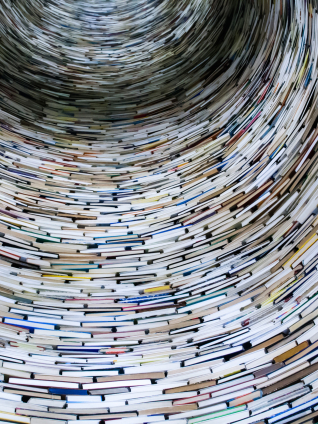Academic articles
Practitioner articles
Working papers
Books
Book chapters
Case studies
Other publications
Subject(s)
Marketing
Keyword(s)
Participative pricing, pay what you want, long-term price dynamics, reference prices, latent growth modeling
Volume
25
Journal Pages
25–36
Subject(s)
Marketing
Keyword(s)
confidence, correction, credibility, persuasion, advertising
At times, consumers are motivated to reduce the influence of a product recommendation on their judgments. Based on previous research, it is unclear whether this correction process will increase or decrease consumers’ confidence in their judgments. We find that source credibility moderates the effect of correction on confidence: correction decreases confidence when a product recommendation comes from a high credibility source but increases confidence when the same message comes from a low credibility source. As a result, correction increases the effectiveness of recommendations from low credibility sources on purchase intentions. Notably, this “confidence via correction” effect is further moderated by elaboration, such that the effect is attenuated for high elaboration consumers. Our results have implications for understanding consumers’ reactions to persuasive messages and for both marketing practitioners and consumer protection agencies using correction cues to influence message persuasiveness.
With permission of Elsevier
Volume
24
Journal Pages
34–48
Subject(s)
Economics, politics and business environment
Keyword(s)
reference-dependent utility, gain-loss utility, loss aversion, sticky prices, sales, supermarket pricing
It is widely known that loss aversion leads individuals to dislike risk, and as has been argued by many researchers, in many instances this creates an incentive for firms to shield consumers and employees against economic risks. Complementing previous research, we show that consumer loss aversion can also have the opposite effect: it can lead a firm to optimally introduce risk into an otherwise deterministic environment. We consider a profit-maximizing monopolist selling to a loss-averse consumer, where (following Koszegi and Rabin (2006)) we assume that the consumer's reference point is her recent rational expectations about the purchase. We establish that for any degree of consumer loss aversion, the monopolist's optimal price distribution consists of low and variable "sale" prices and a high and atomic "regular" price. Realizing that she will buy at the sale prices and hence that she will purchase with positive probability, the consumer chooses to avoid the painful uncertainty in whether she will get the product by buying also at the regular price. This pricing pattern is consistent with several recently documented facts regarding retailer pricing. We show that market power is crucial for this result: when firms compete ex ante for consumers, they choose deterministic prices.
This is an open access article.
Volume
9
Journal Pages
217–251
Subject(s)
Product and operations management
Keyword(s)
Waiting time competition; benchmark effect; loss aversion; queues; game theory
We consider a duopoly where firms compete on waiting times in the presence of an industry benchmark. The demand captured by a firm depends on the gap between the firm's offer and the benchmark. We refer to the benchmark effect as the impact of this gap on demand. The formation of the benchmark is endogenous and depends on both firms' choices. When the benchmark is equal to the shorter of the two offered delays, we characterize the unique Pareto optimal Nash equilibrium. Our analysis reveals a stickiness effect in which firms equate their delays at the equilibrium when the benchmark effect is sufficiently strong. When the benchmark corresponds to a weighted average of the two offered delays, we show the existence of a pure Nash equilibrium. In this case, we reveal a reversal effect, in which the market leader, i.e., the firm that offers a shorter delay, becomes the follower when the benchmark effect is sufficiently strong. In both cases, we show that customers' equilibrium waiting times are shorter with the benchmark effect than without it. Our models also capture customers' loss aversion, which, in our setting, states that demand is more sensitive to the gap between the delay and the benchmark when the delay is longer than the benchmark (loss) than when it is shorter (gain). We characterize the impact of this loss aversion on the equilibrium in both settings. Finally, we show numerically that the stickiness and reversal effects still exist when firms also compete on price.
© 2014 INFORMS
Volume
16
Journal Pages
119–132
ISSN (Online)
1526–5498
ISSN (Print)
1523-4614
Subject(s)
Technology, R&D management
Keyword(s)
patenting, patent thickets, patent portfolio races, complexity, technological opportunities
JEL Code(s)
L13, L20, O34
We analyze incidence and evolution of patent thickets. The paper provides a modeling framework showing how competition for patent portfolios, complementarity of patented technologies and hold-up affect patenting. Predictions are that technological opportunity reduces patenting in complex technologies, while increasing patenting in discrete technologies. Competition has the opposite effects. The predictions are tested using European patent data in a panel with 2,074 patenting firms in thirty technology areas over fifteen years. A new measure of technological complexity is applied. GMM estimation results confirm the predictions of our preferred model. Patent thickets are found in nine out of thirty technology areas.
© 2013 The Editorial Board of The Journal of Industrial Economics and John Wiley & Sons Ltd
Volume
61
Journal Pages
521–563
Subject(s)
Marketing
Keyword(s)
consumption, emotional conditioning
Volume
40
Journal Pages
403–407
Subject(s)
Marketing
Keyword(s)
Acculturation, nostalgia, consumer culture
Volume
41
Journal Pages
94–99
Subject(s)
Entrepreneurship; Technology, R&D management
Keyword(s)
entrepreneurial action, information exposure, opportunity recognition, opportunity evaluation, user entrepreneurship
We study how an individual's exposure to external information regulates the evaluation of entrepreneurial opportunities and entrepreneurial action. Combining data from interviews, a survey, and a comprehensive web log of an online user community spanning eight years, we find that technical information shaped opportunity evaluation and that social information about user needs drove individuals to entrepreneurial action. Our empirical findings suggest that reducing demand uncertainty is a central factor regulating entrepreneurial action, an insight that received theories of entrepreneurial action have so far overlooked.
With permission of the Academy of Management
Volume
56
Journal Pages
1348–1371
Subject(s)
Economics, politics and business environment
Keyword(s)
politics, corporate governance, boards, procurement contracts
JEL Code(s)
G32, G34, G38
Volume
17
Journal Pages
1617–1648
Subject(s)
Marketing
Keyword(s)
product development, marketing strategy, durable goods, quality, signaling game
Our objective is to understand how a firm’s product development capability (PDC) affects the launch strategy for a durable product that is sequentially improved over time in a market where consumers have heterogeneous valuations for quality. We show that the launch strategy of firms is affected by the degree to which consumers think ahead. However, only the strategy of firms with high PDC is affected by the observability of quality. When consumers are myopic and quality is observable, both high and low PDC firms use price skimming and restrict sales of the first generation to consumers with high willingness to pay (WTP). A high PDC firm, however, sells the second generation broadly while a low PDC firm only sells the second generation to consumers with low WTP. When consumers are myopic and quality is unobservable, a firm with high PDC signals its quality by offering a low price for the first generation, which results in broad selling. The price of the second generation is set such that only high WTP consumers buy. A firm with low PDC will not mimic this strategy. If a low PDC firm sells the first generation broadly, it cannot discriminate between the high and low WTP consumers. When consumers are forward looking, a firm with high PDC sells the first generation broadly. This mitigates the “Coase problem” created by consumers thinking ahead. It then sells the second generation product only to the high WTP consumers. In contrast, a firm with low PDC does the opposite. It only sells the first generation to high WTP consumers and the second generation broadly.
With permission of Elsevier
Volume
30
Journal Pages
276–291


